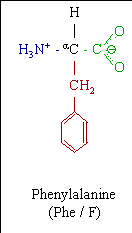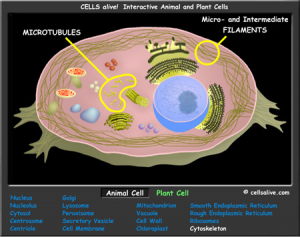Statistics of Making Life
WARNING! Do not read this if you don’t want to know the truth. For everyone else, let’s explore one of the most compelling of all proofs for intelligent design: Statistical probability. Before your eyes glaze over, I guarantee you this will be fun. Either it came together itself by random processes, or it was designed. There simply are no other choices. Even the alien theory would have to answer, “who made the aliens?” and “How did they evolve?” As an increasing number of scientists agree that life did not self-generate on earth, they tend to defer the answer to the unfathomable possibilities in a much larger universe, Well, I address that one too…
Those who avoid the truth don’t want you to see this. Almost everyone agrees that the probability of life forming naturally is very small. But then they mislead you by pointing out that the Earth is big and the universe enormous, And don’t forget about those billions of years! Then the lie continues that life is not only probable in such a large universe, but has evolved many times (because the universe is so large).
How many times have I heard this? But did they ever run the numbers? I bet they did! And they’ve covered up the results, even to the point of believing their own delusion. Then lied to you again by saying that there’s too many things to consider in the complex equation to really come up with a number. Actually that is true. There are too many things to consider. What if we simplify the task and try to make something needed for life under optimal conditions? That’s cheating, but I’m going to show you that it’s impossible even if we cheat in favor of creating life from natural processes. In other words, we can prove that something complex didn’t happen if the probability of something enormously simpler also didn’t happen. So let’s go…
First, if you’re not good at math, don’t worry. I’m going to make this fun. But you if your eyes go crossed, check out this article first.
Now I take you back to the famous Miller–Urey experiment. If you haven’t heard of it, perhaps you’ve heard of the primordial soup. This is the story of the warm pond where just the right chemicals under just the right conditions came together one day and life began. The rest is evolutionary history. There is some debate as to if the primordial Earth offered just the right conditions. So many believe that those conditions existed somewhere else and the Earth was later seeded. If you substitute “story” with “fact” above, you have what is being taught in our schools and universities and you are ignorant to believe otherwise; certainly not capable of thinking scientifically. All legitimate scientists must concur.
Now I demonstrate that not only did this story not occur on Earth, it didn’t happen anywhere in the universe either. I start with the following information:
-
- Number of electrons in the universe: 2.4*1081 (proton density times volume)
 Time span allowed for production of one simple life form: 14 billion years
Time span allowed for production of one simple life form: 14 billion years- Rate by which the selection process can run: 109 trials per second
- Seconds per year: 3.2 * 107
- The number of basic building blocks in the simplest possible life form: 205 (NASA claims it would take 400 for the most basic of life forms.)
- Number of types of building blocks: 4
- Number of chemical constituents to choose from (including the 4 above): 24
For the demonstration, we need just one polynucleotide (one of two strands of DNA) to form with 205 amino acid residues. We’ll disregard numerous other requirements and assume that all we need to do is put 205 together in a chain in any senseless, random order and we’ll have our first life form. Let’s help the process even more: we’re going to assume that our “primordial soup” is extremely concentrated with just the right 4 amino acids. In fact, 4 of 24 molecules are the one’s we need for our chain. So we have a 1:6 chance for each link in the chain. Also, we’ll let the primordial soup pot be extremely large, i.e. larger than the size of the known universe. Finally let’s stir that pot 1 billion times per second for 30 billion years, we’ll give each proton in the universe one chance to see if a chain can be made. So what are the chances?

We have 2.4*1081 * 14 * 109 * 109 * 3.2 * 107 trials to do something with a 1:6 chance 205 times in a row. Multiplying those numbers together comes to 1.1*10108 trials (rolls of the dice). Compare that with something of high
Let me restate what we have: We’re “rolling the dice” 1.1*10108 times, Each time has a probability of success of 1 in 3.3 * 10159. Dividing the second number by the first, we have 1 in 3 * 1051 chance of this happening. I have to write this one out:probability (1 in 6 chance each time for each proton one billion times a second for 14 billion years) happening only 205 times in a row. Seems pretty likely, right? Wrong! (1/6) = 3*10160 which means that the 1 in 6 chance becomes 1 in 3.3 * 10159 chance when requiring that it happens 205 times in a row.
That’s 1 chance in 3,000,000,000,000, 000,000,000, 000,000,000,000, 000,000,000, 000,000,000
or 1 chance in 3 sexdecillion.
Your chance of winning Mega Millions lottery (pick five numbers from 1 to 70 and a Mega number of 1 to 25) is 1 in 302,575,350.
This is a smaller chance than being able to pick out a single atom of all the atoms that make up the earth on the first try.
Anyone familiar with biology and other sciences knows I’ve used absurd numbers, favoring the primordial soup story. Most matter is found in stars and other bodies in which organic life has no chance. Using the number of protons rather than the number of molecules is bonus for the lie. The pot was well suited with favorable chem ical reactions guaranteed at extremely high frequency for a very long time. If we start substituting more reasonable numbers from more reasonable co, the odds against such an occurrence grows exponentially. Consider the chances of the following that we already took for granted:
ical reactions guaranteed at extremely high frequency for a very long time. If we start substituting more reasonable numbers from more reasonable co, the odds against such an occurrence grows exponentially. Consider the chances of the following that we already took for granted:
- All the matter in the universe was magically formed into one big pot of soup, not just 14 billion years ago, but for 14 billion years. No planets, no stars, just soup.
- The conditions required for reaction is good — reactions occur one billion times a second then magically break apart so they can try again in the next one billionth of a second. Ridiculous!!!
- There is nothing to inhibit the reactions.
Finally, in that remotest of chances we have a chain, half the length of what might be considered needed for life, but with none of the supporting systems to replicate and sustain life. I haven’t even mentioned that the code of this 205 residues would be gibberish.
For reference, the human genome has approximately 1,660,078,000 bases. Also remember, there’s much more to even the simplest life form than a little strand of DNA.
It’s easy to put a deck of cards in order by looking at them (using intelligent decisions). Try blindly shuffling them into order. Here’s a simpler test. Take 10 pennies with 10 different years. Mix them in a bag and start pulling them out blindly. See how long it takes to get them in order. These simple tasks are nothing compared with making life. When you get frustrated doing it blindly (the natural way), there’s only one conclusion: Someone must have been looking and knew just how to arrange those molecules in just the right order and create life.
You won’t have to search the internet long before you find someone saying something like this, “probability estimates that ignore the non-random elements predetermined by physics and chemistry are meaningless.” This is obviously written by someone who has done the calculation. They refuse to believe what science and mathematics says and deferr the origin of life to “non-random elements predetermined by physics and chemistry.” What are these mystical elements that brought things into a meaningful order? Is believing in such a thing what true science is about?
Science is about truth and the truth is that God can and did do in 6 days what evolution cannot and did not do in 14 billion years. (or even 14 googol years)
![]()
